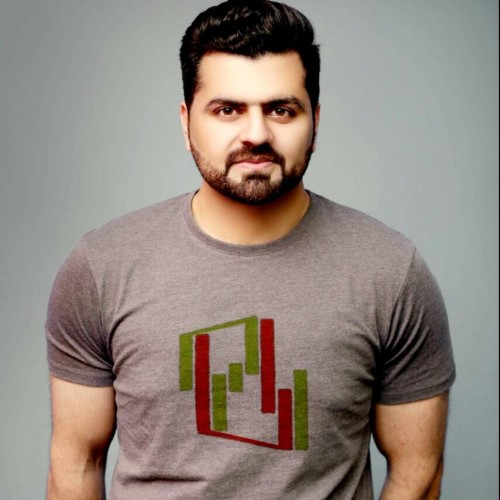Last updated:
 Why Trust Cryptonews
Why Trust Cryptonews

Key Takeaways:
- Tether ventures into traditional media, broadening its business mix.
- The move shifts focus from solely digital finance to creative content.
- This step may encourage blending financial tools with established media practices.
- The decision hints at future cross-industry partnerships.
On March 26, an insider report revealed that Tether planned to acquire a 30% stake in Be Water, a Rome-based Italian media company.
The move reflects Tether’s growing push into traditional industries as it continues to broaden its operations beyond cryptocurrency.
According to Bloomberg, the deal is valued at approximately €10 million ($10.8 million).
Tether CEO Paolo Ardoino confirmed the investment a day later, saying it would help Be Water remain stable, independent, and forward-looking.
Be Water, headquartered in Rome, runs several media operations, including podcast studio Chora Media, social-first brand Will Media, and production company Be Water Film.
If the deal closes, it will mark Tether’s latest step into the media world.
Be Water and Beyond: A Broader Media Push
The deal would not be Tether’s first move into traditional media.
In December 2024, the stablecoin issuer invested $775 million into Rumble, a video-sharing platform that brands itself as an alternative to YouTube.
Since then, Rumble CEO Chris Pavlovski has announced the development of Rumble Wallet, a creator-focused payment tool powered by Tether’s stablecoin infrastructure.
The tool is intended to support direct revenue generation, bypassing banks and third-party processors.
The company has also expanded into the agricultural sector.
Late last year, Tether made an offer to acquire a controlling stake in Adecoagro SA, a large-scale agribusiness in South America.
If approved, the deal would raise Tether’s current 19.4% stake to a majority 51%, according to a November 14, 2024, public filing.
Tether’s Expansion Strategy and Stake in Be Water
The reported investment in Be Water falls in line with a broader strategy Tether laid out in April 2024, when it launched a four-tier structure to guide investments beyond crypto.
The four divisions include:
- Tether Finance (overseeing USDT and related financial products),
- Tether Power (focused on Bitcoin mining and energy),
- Tether Data (backing strategic tech and AI ventures), and
- Tether Edu (leading education initiatives in emerging markets).
Through its investment in Be Water, Tether continues exploring traditional content and media distribution models.
Other recent moves include an $18.75 million investment in Taiwanese crypto exchange XREX, and $150 million into Bitdeer, a Nasdaq-listed Bitcoin mining firm.
Last month, the company signed a memorandum of understanding with Guinea’s government to collaborate on blockchain-based public systems.
It also purchased a minority stake in Juventus Football Club, as part of a larger effort to integrate AI, biotech, and digital assets into sports.
CEO Paolo Ardoino has previously revealed that Tether Data is developing several AI-powered tools—such as AI Translate, AI Voice Assistant, and an AI Bitcoin Wallet Assistant—to improve usability while preserving user privacy and control.
USDT Faces Pressure as Rivals Eye Regulation
As Tether expands into industries like media through ventures such as Be Water, it continues to face growing regulatory pressure—particularly in relation to its flagship stablecoin, USDT.
Recently, Ardoino pushed back against critics who he said are leveraging regulatory influence to curtail USDT’s reach.
His comments were a response to Framework Ventures co-founder Vance Spencer, who warned that new U.S. rules could block foreign stablecoin issuers from the Treasury market.
Spencer argued the change could undermine both Tether and the global role of the U.S. dollar.
Tether’s CEO countered that USDT remains a lifeline for many underserved communities, with over 400 million users relying on it worldwide.
Still, he expressed concern that regulatory shifts are being used as tools to sideline competitors rather than promote fair innovation.
Meanwhile, in Europe, the introduction of MiCA—the EU’s crypto regulatory framework—has already led major exchanges like Binance and Crypto.com to delist USDT.
The impact has been visible. A recent report showed that MiCA-compliant rival USDC saw its supply rise sharply, chipping away at USDT’s market share.
With Be Water potentially joining its portfolio, Tether appears committed to a long-term diversification strategy.
Whether in media, agriculture, or AI, the company is steadily planting flags in areas far beyond its crypto roots.
Frequently Asked Questions (FAQs)
Investing in media allows the firm to combine financial expertise with creative output. This strategy reaches wider audiences, diversifies income channels, and expands its overall operational framework.
The shift into media may help integrate financial services with content production, opening new earnings paths and shifting focus from digital assets toward a multi-industry operational model.
The move hints at a blend between classic media and digital finance. It may restructure revenue streams and forge stronger cross-industry ties, reshaping market dynamics while opening fresh avenues for growth.





















